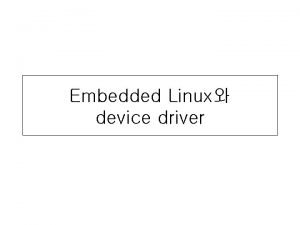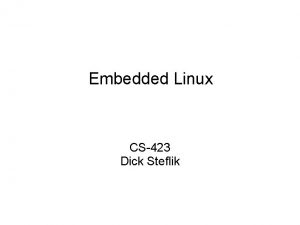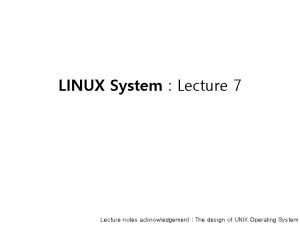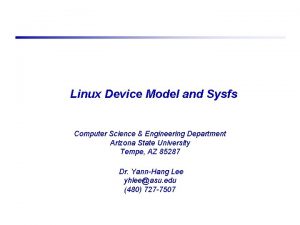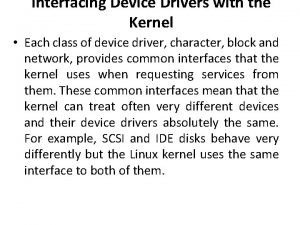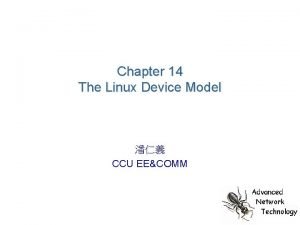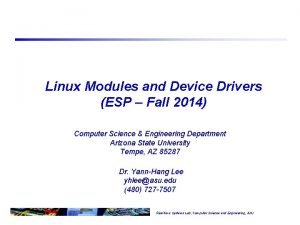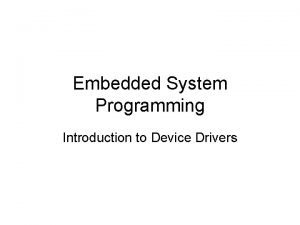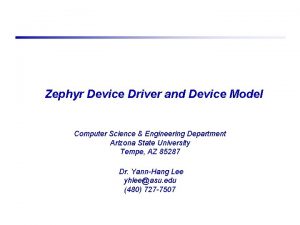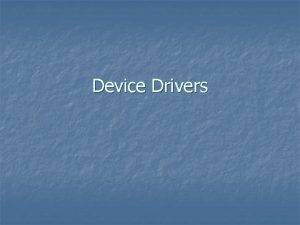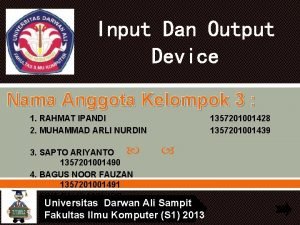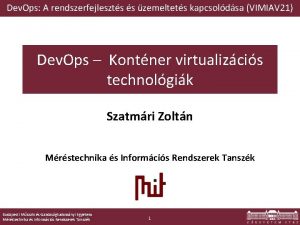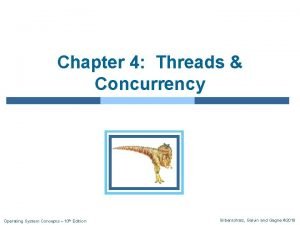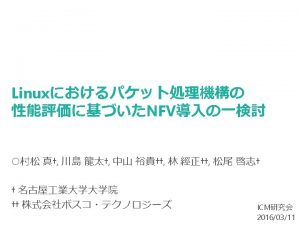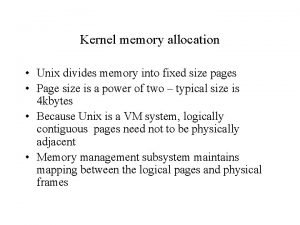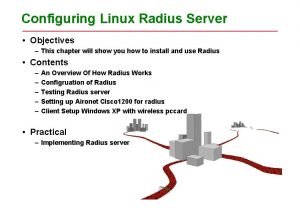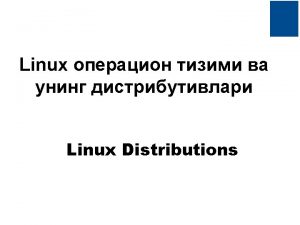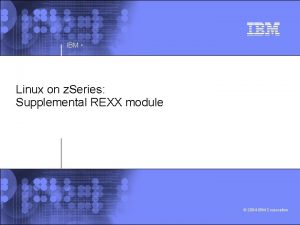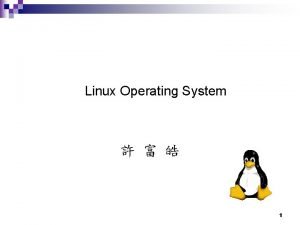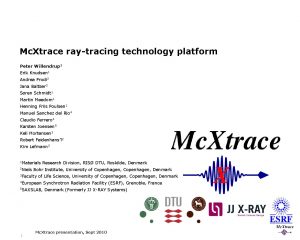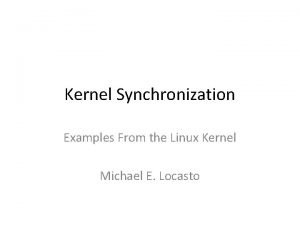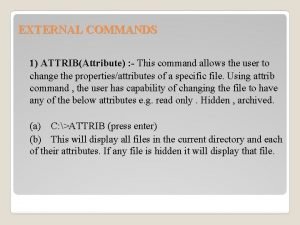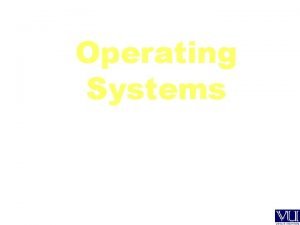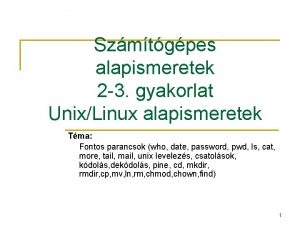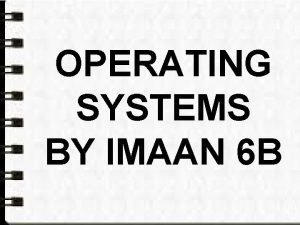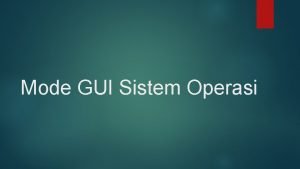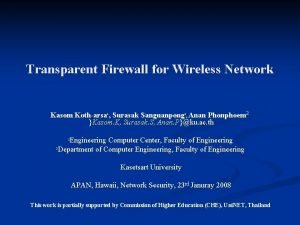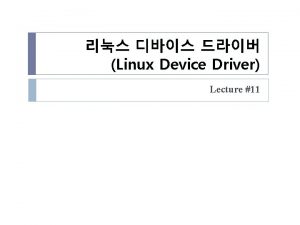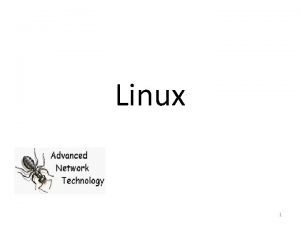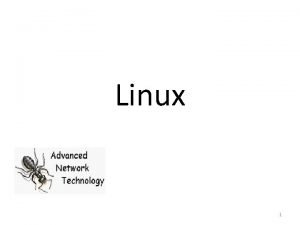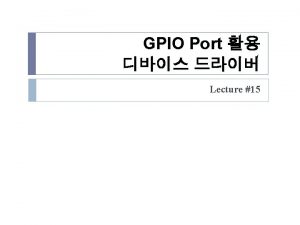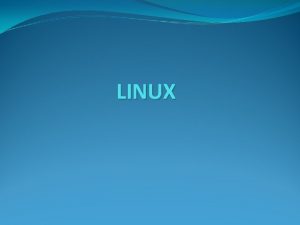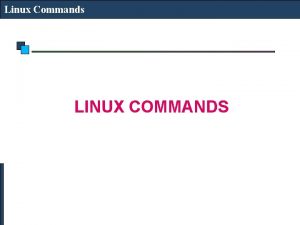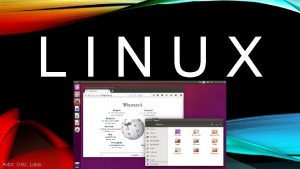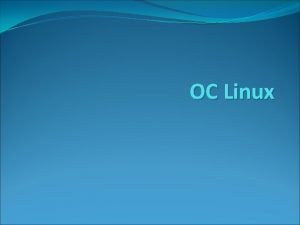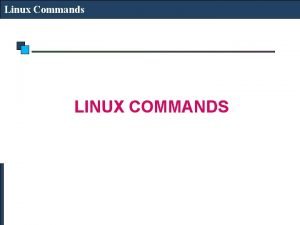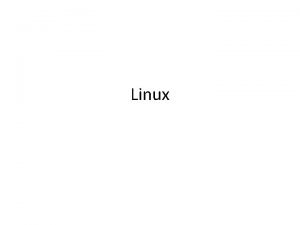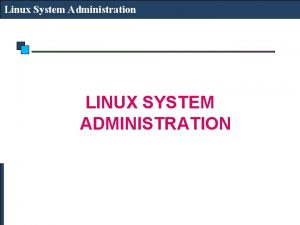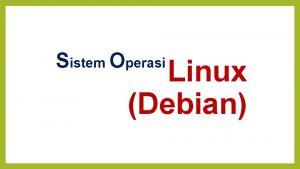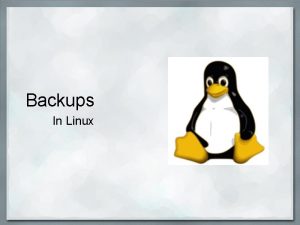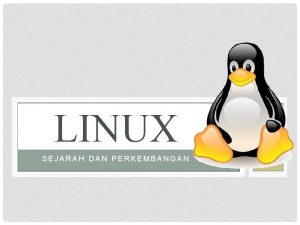Linux Device Driver Lecture 11 Device Driver 4


















































- Slides: 50

리눅스 디바이스 드라이버 (Linux Device Driver) Lecture #11












Device Driver (4) - 구조 Application area Application System Call Interface VFS Kernel area Character D/D Buffer Cache Network Subsystem Block D/D Network D/D Device Interface Hardware 13 Hardware

Device Driver (5) - 구조 kernel device driver user program open close read write system call file operations device_open device_close device_read device_write device 14

Device Driver 작성 (1) Device Driver의 구현 및 테스트 과정 15

Device Driver 작성 (2) 문자 장치 드라이버의 전형적인 형태 Printf와 같은 기능의 커널 코드를 위한 함수 #include 필요한 header. 모듈소스 가 include해야함 <linux/kernel. h> <linux/module. h> <linux/fs. h> <linux/init. h> int sample_init(void); void sample_cleanup(void); int device_open(); int device_release(); ssize_t device_read(); static ssize_t device_write(); int device_ioctl(); static struct file_operations device_fops={ open : device_open, release : device_release, read : device_read, write : device_write, ioctl: device_ioctl, }; 16 “파일시스템”헤더는 디 바이스 드라이버를 쓰는 데 필요한 헤더파일 Header Files Module_init()과 module_exit() 정의됨 Module 설치 시 초기화 수행 insmod로 모듈을 적재하면 이 함 Module 제거 시 반환작업 수행 수가 불려진다. 이 함수 안에서 regiseter_chrdev() 커널 함수를 뷸 러서 모둘을 적재한다. Function Prototypes rmmod로 적재된 모듈을 삭제 할 경우 이 함수가 불려진다. unregister_chrdev() 커널 함수 를 불려서 모듈을 삭제한다. application에서 쓰는 함 수와 driver에서 쓰는 함 수를 mapping Device Opertations

Device Driver 작성 (2) #include <linux/module. h> <linux/fs. h> <linux/kernel. h> <linux/init. h> 모듈을 커널에 적재하는 함수 register_chrdev()의 parameter로써 0으로 설정하면 major값을 뒤에서부터 자 #define DEV_NAME "test_dd" 동으로 빈자리로 등록시킨다 int test_major = 0; int result; register_chrdev()함수가 return하는 값을 넘겨받음. 0보다 적으면 모듇 등록 실패 application에서 open()함수로 driver 를 호출할때 실행되는 함수 /////// 함 수 정 의 /////// int device_open (struct inode *inode, struct file *filp); application에서 close()함수로 int device_release (struct inode *inode, struct file *filp); driver를 닫을때 실행되는 함수 ssize_t device_read (struct file *filp, unsigned int *buf, size_t count, loff_t *f_pos); ssize_t device_write (struct file *filp, unsigned int *buf, size_t count, loff_t *f_pos); int device_ioctl(struct inode *inode, struct file *filp, unsigned int cmd, unsigned int arg); int sample_init(); void sample_cleanup(); 17

Device Driver 작성 (3) int device_open (struct inode *inode, struct file 호출될때마다 *filp) 이 함수가 count { 가 증가한다. printk("test_open start!!!n"); MOD_INC_USE_COUNT; return 0; } int device_release (struct inode *inode, struct file *filp) { 이 함수가 호출될때마다 count MOD_DEC_USE_COUNT; 가 감소한다. return 0; } ssize_t device_read (struct file *filp, unsigned int *buf, size_t count, loff_t *f_pos) { Application에서 read함수를 호출 printk("read() ^^n"); 하면 terminal에 문자 출력 return 0; } ssize_t device_write (struct file *filp, unsigned int *buf, size_t count, loff_t *f_pos) { return 0; } 18

Device Driver 작성 (4) int device_ioctl(struct inode *inode, struct file *filp, unsigned int cmd, unsigned int arg) { Ioctl()호출이 성공하면 문 printk("ioctl() ^^n"); 자 출력 return 0; } 파일연산구조체는 char device driver에 대한 모 struct file_operations test_fops = { 든 연산을 포함한다. 즉 여기에 정의된 함수를 open: device_open, 통해서 커널이 접근하게 된다. 즉 application에 read: device_read, 서 open함수를 호출하면 이는 driver의 write: device_write, test_open()과 mapping되어있어 이를 실행하게 ioctl: device_ioctl, 된다. release: device_release, }; insmod로 불려지는 함수 module_init(sample_init); module_exit(sample_cleanup); 19 rmmod로 불려지는 함수

Device Driver 작성 (5) driver를 커널에 모듈로 int sample_init(void) 등록하는 함수, result에 { major 값이 넘어옴 result = register_chrdev(test_major, DEV_NAME, &test_fops); if (result < 0) { printk(KERN_WARNING "%s: can't get major %dn", DEV_NAME, test_major); return result; } printk("<1> init module success!!. . %s major number : %dn", DEV_NAME, result); return 0; } driver를 커널에서 void sample_cleanup(void) 삭제하는 함수 { if( !unregister_chrdev(result, DEV_NAME) ) printk("%s cleanup_module success. . . n", DEV_NAME); else printk("%s cleanup_module fail. . . n", DEV_NAME); 20 }

Device Driver 작성 (6) 장치 드라이버 등록 방법 외부와 장치 드라이버는 file interface (node를 의미)를 통해 연결 장치 드라이버는 자신을 구별하기 위해 고유의 major number를 사용 문자 장치 드라이버의 등록과 해제 등록 : int register_chrdev(unsigned int major, const char *name, stuct file_operations *fops) 21 Major : major number가 0이면 사용하지 않는 번호 중 자동으로 할당 Name : device의 이름 /proc/devices에 표시됨 Fops : device에 대한 file 연산 함수들 해제 : int unregister_chrdev(unsigned int major, const char *name)

Device Driver 작성 (7) 구조체 struct file_operations static struct file_operations skeleton_fops = { THIS_MODULE, /* struct module *owner; */ NULL, /* skeleton_llseek */ skeleton_read, /* skeleton_read */ skeleton_write, /* skeleton_write */ NULL, /* skeleton_readdir */ NULL, /* skeleton_poll */ skeleton_ioctl, /* skeleton_ioctl */ NULL, /* skeleton_mmap */ skeleton_open, /* skeleton_open */ NULL, /* skeleton_flush */ skeleton_release, /* skeleton_release */ NULL, /* skeleton_fsync */ NULL, /* skeleton_fasync */ NULL, /* skeleton_lock */ NULL, /* skeleton_readv */ NULL /* skeleton_writev */ }; 22




Device Driver 테스트 프로그램 작성 #include <stdio. h> <fcntl. h> <string. h> <errno. h> File에 대한 제어와 설정 Error에 관한 header file int fd; int main(int argc, char **argv) { mknod를 통하여 /dev에 만들어진 node(file)을 open한다. if( (fd = open("/dev/test_d", O_RDWR)) < 3) { fprintf(stderr, "/dev/test_d device file open error!!. . %sn", strerror(errno)); return 0; } read(fd, 0, 0); write(fd, 0, 0); ioctl(fd, NULL, 0); close(fd); return 0; } 26

Device Driver 및 테스트 프로그램 컴파일(1) Makefile 작성 27









문자 장치 드라이버 제작방법 (1) 모듈 시작 및 종료에서 문자 장치의 등록과 해제 등록 : int register_chrdev(unsigned int major, const char *name, struct file_operations *fops) major : 등록할 major number. 0이면 사용하지 않는 번호 중 동적으로 할 당 ? name : 장치의 이름 ? fops : 장치에 대한 파일 연산 함수들 ? 36 해제 : int unregister_chrdev(unsigned int major, const char *name)

문자 장치 드라이버 제작방법 (2) file_operations의 구조체 정의 -<linux/fs. h>참조 struct file_operations { struct module *owner; loff_t (*llseek) (struct file *, loff_t, int); ssize_t (*read) (struct file *, char __user *, size_t, loff_t *); ssize_t (*aio_read) (struct kiocb *, char __user *, size_t, loff_t); ssize_t (*write) (struct file *, const char __user *, size_t, loff_t *); ssize_t (*aio_write) (struct kiocb *, const char __user *, size_t, loff_t); int (*readdir) (struct file *, void *, filldir_t); unsigned int (*poll) (struct file *, struct poll_table_struct *); int (*ioctl) (struct inode *, struct file *, unsigned int, unsigned long); int (*mmap) (struct file *, struct vm_area_struct *); int (*open) (struct inode *, struct file *); int (*flush) (struct file *); int (*release) (struct inode *, struct file *); int (*fsync) (struct file *, struct dentry *, int datasync); int (*aio_fsync) (struct kiocb *, int datasync); int (*fasync) (int, struct file *, int); int (*lock) (struct file *, int, struct file_lock *); ssize_t (*readv) (struct file *, const struct iovec *, unsigned long, loff_t *); ssize_t (*writev) (struct file *, const struct iovec *, unsigned long, loff_t *); ssize_t (*sendfile) (struct file *, loff_t *, size_t, read_actor_t, void __user *); ssize_t (*sendpage) (struct file *, struct page *, int, size_t, loff_t *, int); unsigned long (*get_unmapped_area) (struct file *, unsigned long, unsigned long); 37};




문자 장치 드라이버 제작방법 (6) 데이터 전달 함수 get_user(void *, Const void *addr) ? 사용자 공간의 어드레스 addr로 부터 변수x로 바이트(1, 2, 4)를 복사 put_user(void *, Const void *addr) addr로부터 변수 x까지 사용자 공간으로 바이트를 복사 copy_to_user(void *to, void *from, unsinged long size) copy_from_user(void *to, void *from, unsinged long size) <asm/uaccess. h> 참조 ? get_user(), copy_from_user() kernel 디바이스 드라이버 put_user(), copy_to_user() 41 App








Test Board I/O Port Address (1) Address I/O device PXA 255 Pro 1 비고 0 x 0 c 000002 LED 출력 포트 0 x 0 c 000004 FND 출력 포트 0 x 0 c 00001 e DOT #1 출력 포트 0 x 0 c 000018 Step Motor 제어 포트 0 x 0 c 00001 c Text LCD 명령어 포트 0 x 0 c 00001 a Text LCD 데이터 포트 0 x 0 c 000006 ~0 x 0 c 000014 ADC 입력값 FIFO(16 Btes) 0 x 0 d 000016 DAC 출력값 FIFO(16 Btes) 49

Test Board I/O Port Address (2) Address I/O device PXA 255 Pro 3 비고 0 x 0 c 000016 LED 출력 포트 0 x 0 c 000002 FND 출력 포트 0 x 0 c 000004 DOT #1 출력 포트 0 x 0 c 00000 c Step Motor 제어 포트 0 x 0 c 000014 Text LCD 명령어 포트 0 x 0 c 000012 Text LCD 데이터 포트 0 x 0 c 800000 ADC 입력값 FIFO(16 Bytes) 0 x 0 d 000000 ~0 x 0 d 000020 DAC 출력값 FIFO(16 Bytes) 0 x 0 c 800004 CDS 출력값 50
 Linux device driver
Linux device driver Kernel linux security module m1 support
Kernel linux security module m1 support Guilots
Guilots Linux lecture notes
Linux lecture notes Linux lecture
Linux lecture 01:640:244 lecture notes - lecture 15: plat, idah, farad
01:640:244 lecture notes - lecture 15: plat, idah, farad Ram input or output device
Ram input or output device Linux to introduce driver just to
Linux to introduce driver just to Windows driver foundation - user-mode driver framework
Windows driver foundation - user-mode driver framework Linux device model
Linux device model Linux character device
Linux character device Linux device model
Linux device model Character device file in linux
Character device file in linux Device driver programming in embedded systems
Device driver programming in embedded systems Device_and_api_init
Device_and_api_init Device drivers meaning
Device drivers meaning Windows ce device manager
Windows ce device manager Device driver does not support hardware shadow maps
Device driver does not support hardware shadow maps A tagout device is preferable to using a lockout device.
A tagout device is preferable to using a lockout device. Monitor output
Monitor output Linux pc cluster
Linux pc cluster Wim coekaerts salary
Wim coekaerts salary Android aaudio example
Android aaudio example Linux containers (lxc)
Linux containers (lxc) Grand central dispatch c++
Grand central dispatch c++ Netmap linux
Netmap linux Queuevax
Queuevax Windows like linux os
Windows like linux os Buddy algorithm in linux
Buddy algorithm in linux Radius linux
Radius linux Linux mint distrowatch
Linux mint distrowatch Linux rexx
Linux rexx Linux address space
Linux address space Xtrace linux
Xtrace linux Kernel synchronization in linux
Kernel synchronization in linux Slax linux ventajas y desventajas
Slax linux ventajas y desventajas Rcu linux
Rcu linux Mksysb linux
Mksysb linux Leeenux linux free download
Leeenux linux free download Pencipta linux
Pencipta linux List of external commands in linux
List of external commands in linux Prog3 bme
Prog3 bme Linux login history
Linux login history Midnigth commander
Midnigth commander Quartus programmer linux
Quartus programmer linux High performance computing linux
High performance computing linux Azure dsc linux
Azure dsc linux Linus torvalds on where will linux
Linus torvalds on where will linux Aplikasi desktop linux yang banyak digunakan pada mode gui
Aplikasi desktop linux yang banyak digunakan pada mode gui Unix and linux similarities
Unix and linux similarities Shadow vlan
Shadow vlan
